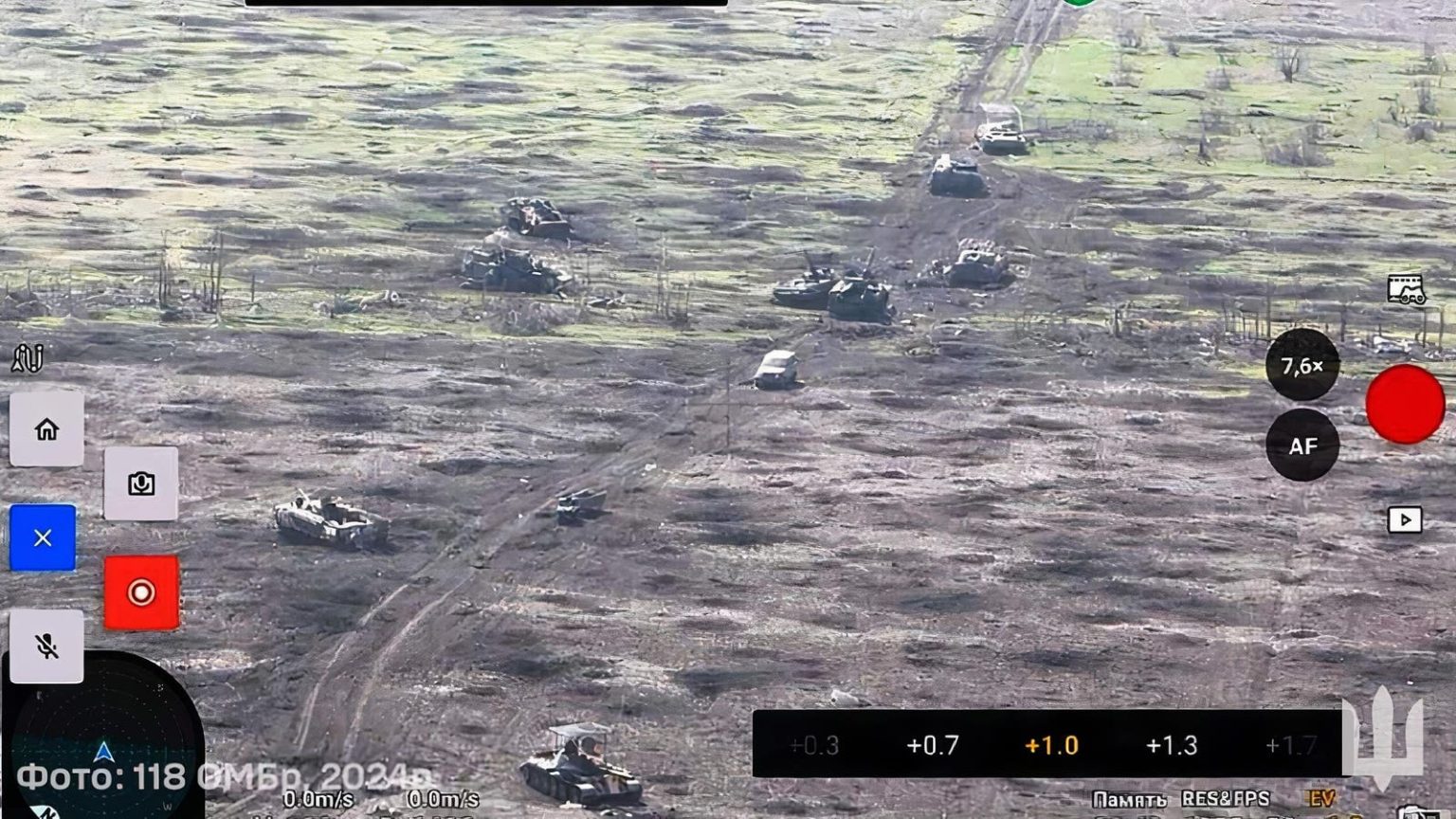Ukrainian drone operators witnessed a shocking sight on March 30 as a Russian assault group, including troops and vehicles from the 76th Guards Air Assault Division, advanced towards Ukrainian lines outside Novopokrovka in southern Ukraine’s Zaporizhzhia Oblast. The lead tank in the assault was a 1950s-vintage T-55 fitted with crude anti-drone armor, a stark deviation from the modern T-72 and T-90 tanks typically used by the division. This assault ended in disaster for the Russians as the Ukrainians swiftly retaliated, destroying at least 11 Russian vehicles, including the outdated T-55 tank.
The ongoing conflict between Ukrainian and Russian forces in Ukraine has seen Ukrainian forces successfully defeating large Russian assault groups along the front lines, despite facing challenges with limited ammunition supplies following the blockage of U.S. aid by Russia-friendly Republicans in October. The Russians, struggling with significant losses of modern vehicles in Ukraine, have resorted to reactivating outdated tanks such as the T-55 from long-term storage to make up for the shortfall in equipment production by Russian industry.
The Russian armed forces are facing significant losses of tanks, fighting vehicles, and howitzers every month, at a rate higher than previous months. To compensate for these losses, the Kremlin has been forced to rely on older vehicles from storage and assign them to units that were once equipped with modern vehicles. While the Kremlin has the option to pause front-line attacks and rebuild combat units with modern equipment and trained personnel, they have chosen to continue attacking and provide whatever resources they can scrounge up.
In efforts to rebuild its forces and replace losses, Russia is recruiting new personnel, creating new units, and reactivating older vehicles such as T-62 and T-55 tanks to compensate for the lack of modern equipment. The Russian vehicle losses since the start of the wider invasion in February 2022 exceed 15,000, including nearly 2,900 tanks, which is a significant strain on Russia’s ability to replenish military resources at the same rate.
With Ukraine’s ammunition stocks running low due to the suspension of American aid, Russian forces see an opportunity to advance further on the battlefield and make significant gains. This offensive strategy, however, comes at a cost as Russia is forced to use older vehicles or even civilian vehicles in place of modern armored vehicles that have been lost in combat. If the current offensive fails and American aid is restored, Russia may find itself struggling to quickly replenish its forces as the Ukrainians regain the upper hand.
The situation in Ukraine highlights the reality that Russia is depleting its military resources at a faster rate than it can replenish them. The Kremlin’s strategy of advancing in Ukraine to force capitulation on Russian terms is becoming increasingly risky as they face challenges in replacing lost equipment and maintaining operational effectiveness on the battlefield. If the current offensive fails, Russia may find itself in a vulnerable position, lacking the necessary resources to quickly recover and respond to Ukrainian advancements.


